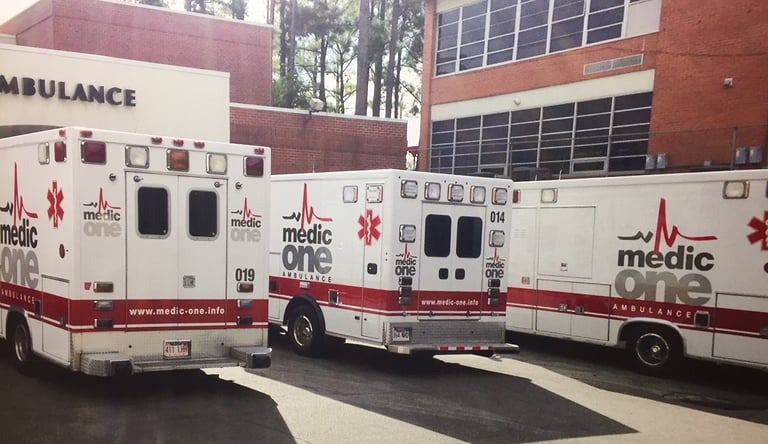News Alert: New ePCR Integration Simplifies EMS Data Management and Enables Better Care Coordination
How to Improve Patient Outcomes & Provider Safety on the Move
When resuscitation on the move is necessary you want two things: you want the highest-quality CPR and you want to make sure while that CPR is being delivered that the patient and the crew are safe
Was this information valuable?

When resuscitation on the move is necessary you want two things: you want the highest-quality CPR and you want to make sure while that CPR is being delivered that the patient and the crew are safe. That’s why my agency, Medic One Ambulance based in Jonesboro, Arkansas, has invested in the AutoPulse Resuscitation System, ResQPOD ITD and Road Safety from ZOLL.

AutoPulse Improves Resuscitation
Providing CPR during transport is a challenge. Especially in mostly rural Arkansas and Southeast Missouri. On average, once we pick up a patient, it’s about 30 minutes to the nearest hospital. Our paramedics used to work themselves to death while administering CPR on the move and would require help from extra personnel to also manage medication and the airway.
In 2006, the president of Medic One saw a demo of the AutoPulse at a tradeshow. During sudden cardiac arrest, the automated resuscitation system squeezes the patient’s entire chest to improve blood flow to the heart and brain. It’s been shown to reduce interruptions in compressions during transport by more than 85 percent. Our president decided investing in AutoPulse would be a big asset to us in improving patient outcomes, so we purchased two. Now all 21 of our ALS trucks have an AutoPulse on board.
ResQPOD Adds to the Quality of CPR
We were able to further improve on our quality of CPR when we added ResQPOD, a simple, non-invasive device that delivers intrathoracic pressure regulation (IPR) therapy during basic or advanced life support CPR to improve perfusion.
With AutoPulse and ResQPOD, are paramedics are freed up to monitor their patient without distractions and stay safe in the back of a moving ambulance.
The ResQPOD lowers intrathoracic pressure during the recoil phase of CPR by selectively restricting unnecessary airflow into the chest. This vacuum increases preload, lowers intracranial pressure (ICP), and improves blood flow to the brain and vital organs. When we used this in conjunction with AutoPulse we began to see improved patient outcomes. The return of spontaneous circulation (ROSC) rate increased from just about 17 to 21 percent of all cardiac arrest patients to 38 to 41 percent.
With AutoPulse and ResQPOD, are paramedics are freed up to monitor their patient without distractions and stay safe in the back of a moving ambulance.
Transport Patients Safely with Road Safety
We saw the value in Road Safety, ZOLL’s driver monitoring and feedback system, early on. We were looking to bolster safety at Medic One and reduce wear and tear on our vehicles. On top of no major incidents since implementation, we’ve consistently seen a steady decrease in maintenance costs – a 15 percent decrease from the previous period the last time we ran the numbers – as well as a decrease in fender benders.
One of the best parts of the system is that it’s a tool to help our ambulance operators be better drivers, which delivers on our promise to safety transport our patients. Any time they speed through an intersection, take a turn to fast or brake too hard, it lets them know. We track all of those reports and reward drivers when they excel. When we bring new employees on board, we use it as a training tool.
With all three tools: the AutoPulse, ResQPOD and Road Safety, we’ve been able to improve patient and operational outcomes as well as develop a culture of safety within our organization.
Related Posts
4 Must-have Data Points for Dispatch-Billing Alignment and Maximum Reimbursement
How STAT MedEvac Connected Device, Software, and Data Technology To Enhance QA and Elevate Care
ZOLL Pulse Blog
Subscribe to our blog and receive quality content that makes your job as an EMS & fire, hospital, or AR professional easier.
ZOLL Pulse Blog
Subscribe to our blog and receive quality content that makes your job as an EMS, fire, hospital, or AR professional easier.





